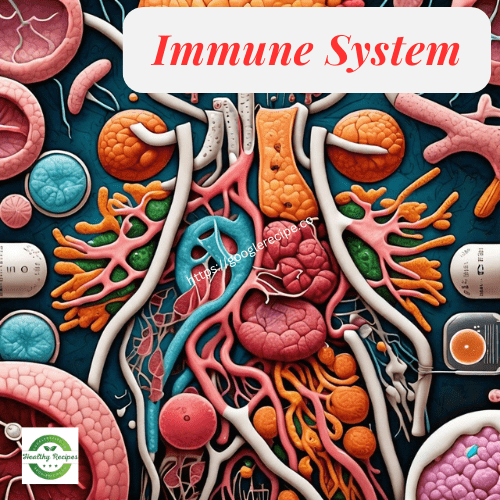Genetic Engineering
The Evolution of Insulin: From Cows and Pigs to Microorganisms
Genetic Engineering? Many years ago, individuals with diabetes who required insulin to survive had to inject insulin derived from cows or pigs into their bodies.
This method, while lifesaving, was not ideal for several reasons, including the potential for allergic reactions and differences in insulin activity between species.
Today, however, the insulin that diabetics inject is human insulin, produced by microorganisms such as the E. coli bacterium and certain strains of yeast.
What is Genetic Engineering?
Genetic engineering is the manipulation or alteration of an organism’s DNA. An organism’s DNA comprises its genes, which code for all the proteins necessary for its survival.
All gene codes for a unsimilar protein or item of a protein. Genetic engineering involves removing a gene from one organism, known as the donor, and transferring it to another organism, known as the recipient.
The recipient organism, now containing genes from another species, is called a transgenic organism or a genetically modified organism (GMO).
The Purposes of Genetic Engineering
There are two primary purposes of genetic engineering:
- Production of Large Volumes of Proteins: Sometimes, we require large volumes of a specific protein. Scientists use transgenic microorganisms to produce these proteins in abundance. Growth hormone, insulin, and vaccinations are a few examples.
- Conferment of Beneficial Traits: A gene from one organism can be introduced into another to bestow a beneficial trait. For instance, a gene that produces a toxic chemical in a bacterium can be introduced into a maize plant, making the plant toxic to certain pests like caterpillars.
The Process of Genetic Engineering
Although genetic engineering is a complex process, it can be summarized using the example of how the insulin gene is inserted into a bacterium to produce human insulin:
- Identification and Extraction of the Insulin Gene: The gene that codes for human insulin is located on chromosome 11 at position 15.5. This gene is cut from chromosome 11 using special enzymes known as restriction enzymes.
- Preparation of the Bacterial Plasmid: Bacteria possess small circular strands of DNA called plasmids, which float in their cytoplasm. A plasmid is extracted from the bacterial cell and cut open using the same restriction enzymes.
- Insertion of the Insulin Gene: The restriction enzymes create sticky ends, where one DNA strand is slightly longer than the other. These sticky ends allow the human insulin gene to be joined to the plasmid using complementary base pairing. An enzyme called ligase is then used to complete the joining process.
- Creation of the Transgenic Bacterium: The modified plasmid is reinserted into the bacterial cell, creating a genetically modified bacterium containing both bacterial DNA and the human insulin gene.
- Production of Human Insulin: The transgenic bacterium is placed in a fermenter, which provides ideal conditions for rapid asexual reproduction. The bacteria reproduce, creating clones that all contain the recombinant DNA. These bacteria express the human insulin gene, producing human insulin, which is then extracted, purified, and packaged for medical use.
The Impact of Genetic Engineering on Insulin Production
Thanks to genetic engineering, diabetics can now inject themselves with human insulin produced by microorganisms, which closely mimics the insulin naturally produced by the human body.
This advancement not only improves the quality of life for diabetics but also demonstrates the profound impact genetic engineering has on health, the environment, and the economy.
By turning certain microorganisms into mini-factories that produce valuable substances, scientists continue to push the boundaries of what is possible in medicine and biotechnology.
Conclusion
The journey from animal-derived insulin to human insulin produced by genetically engineered microorganisms marks a significant milestone in medical science.
Genetic engineering has revolutionized the production of insulin, making it safer and more effective for diabetics worldwide. This process, which involves the precise manipulation of DNA, exemplifies how modern biotechnology can create solutions that enhance our health and well-being.
By harnessing the power of microorganisms, scientists have not only improved the treatment of diabetes but have also opened up countless possibilities for future advancements in medicine.
As we continue to explore and develop genetic engineering technologies, we can look forward to a future where many more health challenges are met with innovative and life-changing solutions.
FAQs about Genetic Engineering and Insulin Production
1. What is genetic engineering?
Genetic engineering involves the manipulation or alteration of an organism’s DNA to achieve desired traits or produce useful substances.
2. How is insulin produced today?
Insulin for diabetic treatment is now produced using genetically modified microorganisms like E. coli and yeast, which are engineered to produce human insulin.
3. Why is human insulin preferred over animal-derived insulin?
Human insulin closely matches insulin produced naturally in humans, reducing the risk of allergic reactions and providing more effective control of blood sugar levels.
4. How does genetic engineering benefit insulin production?
Genetic engineering allows for the mass production of human insulin in microorganism “factories,” ensuring a stable and reliable supply for diabetic patients worldwide.
5. What are the ethical considerations of genetic engineering in insulin production?
Ethical considerations include ensuring the safety of genetically modified organisms, addressing concerns about genetic modification in food crops, and promoting transparency in biotechnological advancements.
6. What are the future prospects of genetic engineering in medicine?
Genetic engineering holds promise for developing personalized medicines, enhancing vaccine production, and tackling diseases with genetic components more effectively.
7. Is genetically engineered insulin safe for diabetic patients?
Yes, genetically engineered insulin has been extensively tested and approved by regulatory agencies worldwide, ensuring its safety and efficacy for diabetic treatment.
8. How does genetic engineering contribute to sustainable healthcare practices?
By optimizing production processes and reducing reliance on animal sources, genetic engineering promotes sustainable and environmentally friendly healthcare solutions.


